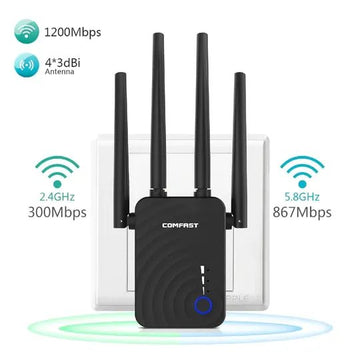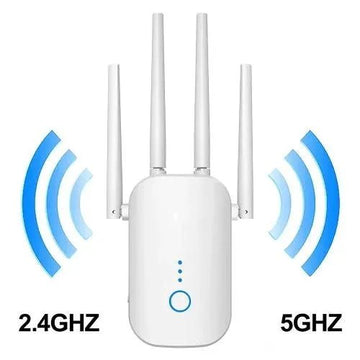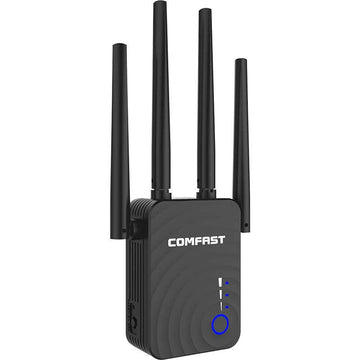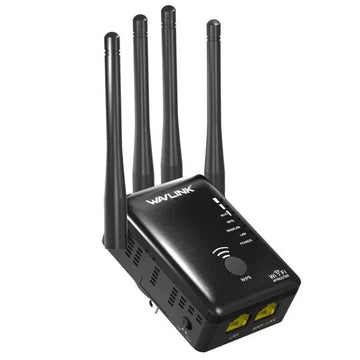Can the Right Placement Make a Difference? How Should You Position Your Wifi Extender for Better Signal Strength?
In today's connected world, a strong and reliable Wifi signal is essential for seamless internet connectivity. However, due to various factors, such as distance, physical obstacles, and interference, certain areas in our homes or offices may suffer from weak Wifi signals. This is where Wifi extenders come into play, acting as signal boosters to expand coverage and improve signal strength. In this article, we will delve into the impact of proper placement on Wifi extender performance, exploring guidelines, best practices, and troubleshooting tips to help you achieve optimal signal strength and coverage.
Understanding Wifi Extenders
Wifi extenders, also known as range extenders or repeaters, are devices designed to amplify and extend the reach of existing Wifi signals. They work by receiving the Wifi signal from the router and rebroadcasting it, effectively expanding its coverage area. Wifi extenders serve as a bridge between the router and areas with weak signal strength, ensuring a stable and reliable connection. Common types of Wifi extenders available in the market include plug-in extenders, desktop extenders, and outdoor extenders, each with its own advantages and applications.
Factors Affecting Wifi Extender Placement
Several factors influence the placement of a Wifi extender, directly impacting its performance. Firstly, the distance between the extender and the router plays a crucial role. Ideally, the extender should be placed within the range of the router's Wifi signal, but not too close to avoid interference. Additionally, physical obstacles like walls, floors, and furniture can weaken the signal, so it is important to consider these barriers when positioning the extender. Compatibility between the extender and the router is another vital factor, as mismatched frequencies or standards may result in reduced performance. Lastly, ensuring the availability of electrical outlets and a suitable power source is essential for proper functioning of the extender.
Guidelines for Optimal Placement
To achieve the best possible performance from your Wifi extender, it is crucial to follow certain guidelines. Begin by mapping out Wifi dead zones and areas with weak signal coverage in your home or office. Identifying these problematic areas will help determine the ideal placement for your extender. Experiment with different positions, finding the right distance from the router that allows for optimal signal extension. Be mindful of physical obstructions and sources of interference such as large appliances or electronic devices. Utilize signal strength indicators provided by the extender to gauge the effectiveness of different placement options. Additionally, consider the compatibility of the extender with the router's frequency and standards to maximize performance.
Best Practices for Wifi Extender Placement
To achieve the best signal strength and coverage, it is recommended to position the Wifi booster at the halfway point between the router and the target area. This ensures balanced signal distribution and optimal coverage. Moreover, adjusting the extender's position for vertical signal propagation can be beneficial, particularly if the target area is on a different floor. External antennas and signal boosters can also be utilized to enhance the extender's performance, providing a stronger and more reliable signal. Lastly, keeping the extender away from large appliances and electronic devices helps minimize interference and ensures a more stable Wifi connection.
Troubleshooting and Fine-Tuning Placement
After placing the Wifi extender, it is important to conduct speed tests to measure its effectiveness. These tests will help identify any potential issues and fine-tune the placement if necessary. If you experience suboptimal performance, consider reconfiguring the extender or experimenting with alternative placement options. Sometimes, seeking professional assistance from your internet service provider or a Wifi specialist may be required to address complex issues and optimize the extender's performance.
Conclusion
Wifi extenders play a crucial role in improving signal coverage and strengthening Wifi connectivity. By understanding the factors affecting extender placement and following the outlined guidelines and best practices, you can significantly enhance the performance of your Wifi network. Proper placement helps mitigate Wifi dead zones, eliminate weak signal areas, and ensure a seamless online experience throughout your home or office. Remember to test and fine-tune the placement to achieve optimal results. By investing time and effort in positioning your Wifi extender correctly, you can enjoy better signal strength, improved connectivity, and a more reliable internet experience.





